Green infrastructure and ecosystem services – is the devil in the detail? (Viewpoint)
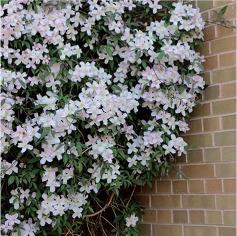
Urban green infrastructure provides a range of ecosystem services to human society. But how much does plant choice matter in the delivery of these services? Paradoxically, much of the literature on green infrastructure rarely mentions the importance of plant selection in urban development planning schemes. Cameron and Blanusa (pp. 377–391) discuss how selection according to plant genotypes makes a significant difference to how well a specific ecosystem service is delivered. They cite examples to illustrate how plant choice strongly influences services linked to city cooling, flood mitigation, air quality, urban biodiversity and even human well-being within the urban environment. This research on the selection and development of functional landscape plants is in its infancy and provides significant opportunities for further investigations in this potentially high-impact area of plant science.
Saving a blueprint of the Tree of Life
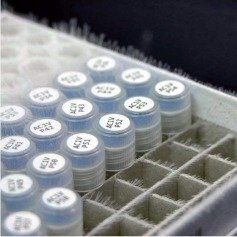
Access to legally acquired, high-quality DNA and tissue samples is often elusive for those undertaking genomic research. Seberg et al. (pp. 393–399). The Global Genome Biodiversity Network (GGBN) aims to solve this problem by linking existing biodiversity biorepositories together, sharing common standards and a data portal, which will enable both efficient searching for samples, collected in accordance with national and international conventions and regulations, and identification of gaps across collections. Using the Botanical Gardens Network the Global Genome Initiative-Gardens project aims to add high-quality genetic material to GGBN sourced from a minimum of one species from each of the approximately 460 vascular plant families, and one species from approximately half of the 15 000 vascular plant genera.
Picture is courtesy of Adrian Van Allen, Smithsonian Institution.
Maize root growth angles, nitrogen capture and environmental conditions
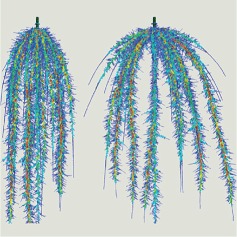
Crops capable of improved nitrogen capture are in demand for the purposes of efficient global agricultural production. Dathe et al. (pp. 401–414) employ functional-structural modelling to test the hypothesis that variation in the growth angles of maize roots is an important determinant of nitrogen uptake. They find that root growth angles are primary determinants of nitrogen acquisition in maize. With decreasing soil nitrogen status, optimal angles resulted in 15–50 % greater nitrogen acquisition over 42 days. Optimal root phenotypes for nitrogen capture vary with differing soil and precipitation regimes, suggesting that genetic selection for root phenotypes could be tailored to specific environments.
Specialisation and modularity of plant-pollinator networks
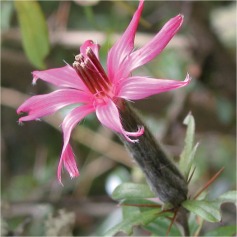
Modularity is the tendency of certain species to consistently interact with each other. It is a ubiquitous and important property of ecological networks that can determine the level of specialisation of species within those networks. Watts et al. (pp. 415–429) investigate modularity and specialisation of plant-pollinator communities in the Peruvian Andes, a biodiverse region where no work in this area has hitherto been carried out. They find that species at the centre of the modular structure of the plant–pollinator network tend to be the most abundant, with long phenologies. Additionally, they show that generalist plant species with open-access flowers dominate the plant-pollinator network. They conclude by cautioning that measuring specialisation requires careful consideration of how one defines a ‘specialist’.
Intrinsic post-zygotic barriers play a key role in maintaining species boundaries in Eucalyptus
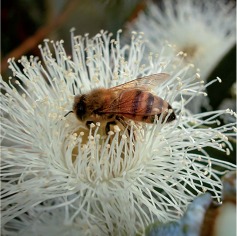
Larcombe et al. (pp. 431–444) present a 20-year assessment of reproductive isolation in a forest tree system. They show that intermediate inheritance of floral morphology results in the loss of strong mechanical barriers to zygote formation between Eucalyptus globulus and E. nitens – enabling F1 hybrids to act as a bridge for gene flow between the taxa. However, intrinsic postzygotic barriers cause significant outbreeding depression in growth, survival and reproductive capacity at 20 years of age across multiple hybrid classes. Thus, in contrast to many herbaceous systems, intrinsic postzygotic barriers seem to play a key role in maintaining species integrity in this system.
Diversity and constraints in the floral morphological evolution of Leandra s.str.
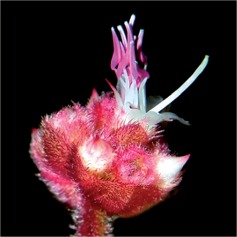
Processes related to floral diversification and the relation of floral diversification to speciation are largely unaccounted for in the Melastomataceae. Reginato and Michelangeli (pp. 445–458) describe the floral diversity of Leandra s.str. on a continuous framework and investigate its floral evolution. The authors observe that Leandra flowers appear to be quite distinct, but without discrete flower types. Correlating the morphology and colour of floral structures, the authors discern the lowest rate of floral morphological change in the clade with the most specialised flowers. While Leandra adopts a single, general pollination system, nevertheless this group exhibits striking diversity in its floral structures as well as converging patterns.
Foliar nectar can enhance plant-mite mutualisms
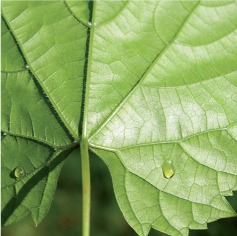
Mite domatia are small structures on the underside of plant leaves that house predacious or fungivorous mites, thereby mediating a plant-mite defence mutualism. It has been suggested that plants benefit more from domatia-dwelling mites when they offer them supplementary food in the form of extrafloral nectar secreted from leaves. Weber et al. (pp. 459–466) tested this hypothesis by experimentally adding nectar to the leaves of two species of wild grape. They find that foliar nectar can enhance plant-mite mutualisms by increasing the number of mites found inhabiting domatia, which in turn decreased powdery mildew load on the leaf surface. The authors pair their experiments with a survey of the distribution of domatia and extrafloral nectar across the plant tree of life, and show that these two interesting mutualistic traits frequently occur in the same clades.
It’s not easy being green: ecophysiological patterns of mycoheterotrophy in ectomycorrhizal Orchidaceae and Ericaceae
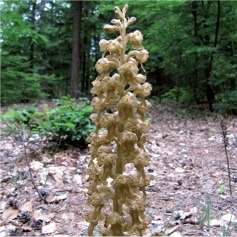
Autotrophy, though common among plants, isn’t the only way plants make a living. Some plants have lost all photosynthetic abilities and instead rely on symbiotic relationships with fungi. Even some leafy green plants that appear fully autotrophic meet a portion of their energy demands via partnerships with fungi. These plant adaptations fall into the category of mycoheterotrophy. Here, Hynson et al. (pp. 467–479) synthesise the largest data set available on the ecophysiologies of mycoheterotrophs in the families Ericaceae and Orchidaceae. They find that enrichment patterns of carbon and nitrogen stable isotope composition, together with nitrogen concentrations reveal plant trophic status and familial identity.
Hormone regulation of rhizome development
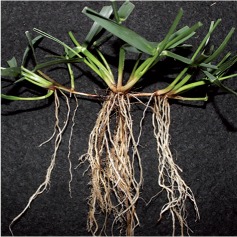
Rhizomes are underground stems serving as storage organs and containing meristematic tissues which are capable of generating shoots and roots. However, the mechanisms controlling rhizome formation and growth are not yet completely understood. Ma et al. (pp. 481–494) find that cytokinins (CK) and gibberellins (GA) promoted rhizome formation and growth, respectively, through activating genes and proteins in metabolic pathways that supply energy and amino acids to support cell division and expansion during rhizome initiation and elongation in tall fescue (Festuca arundinacea).
Phylogeographic insights into the enigmatic Laurel tree and an endemic gentian from the Canary Islands
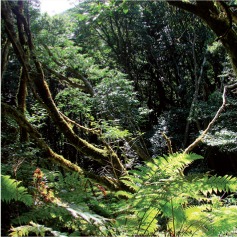
Laurel forest is often regarded as an ancient type of woodland as reflected in the ‘Tertiary relict’ hypothesis. The Canary Islands are one of the present day hotspots of laurel forest harbouring remarkable species richness and endemism. In recent decades there has been a rapid decline in and severe threats to the biodiversity of laurel forest populations worldwide. Betzin et al. (pp. 495–510) undertake an extensive fine-scale sampling for genetic analysis of the laurel tree (Laurus novo-canariensis) and the endemic gentian Ixanthus viscosus. Through their extensive phylogeographic investigation of contemporary population dynamics for these archaic forest populations they find evidence indicating contemporary gene flow and dispersal on a micro/local scale.
Funaria hygrometrica gametophyte and sporophyte cuticular waxes
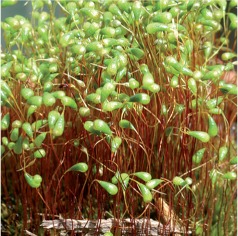
The waxy cuticles that coat plant surfaces have been relatively well studied in vascular plant taxa, but it is unclear how similar they may be across distant lineages. Busta et al. (pp. 511–522) present comprehensive analyses of the waxes on the model moss Funaria hygrometrica including, for the first time, measurements of the amount of wax per surface area and a comparison of three aerial moss structures. These results are discussed in the context of plant evolution, the relationships between the parental and offspring moss structures, and the biosynthesis of cuticular wax compounds.
Why does the architectural arrangement of flowers vary among species?
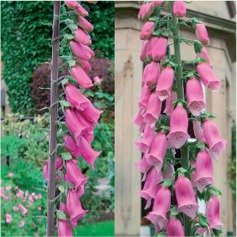
Angiosperms exhibit great variations within the architectural arrangements of their floral displays, which serve reproductive functions. The influence of display size and of individual floral traits on fitness is well understood. However, few studies have asked ‘Why does the three-dimensional arrangement of flowers within floral displays vary greatly among species?’ Jordan et al. (pp. 523–527) examine the effect of secund (i.e., one-sided) floral displays on pollinator behaviour and find that secund inflorescences enhance bees’ tendency to move upwards between flowers, compared to control inflorescences. The authors suggest that the resulting altered pollinator behaviour has far-reaching repercussions for pollen movement (i.e. plant mating), and thereby is a key influence on the evolution of individual flowers and their overall display structures.
Seed dormancy changes of snowbed species under climate warming
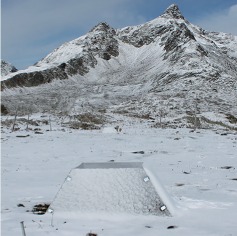
Parental plant growth environment could alter the state of seed dormancy, affecting the timing of emergence and seedling survival. In the context of climate warming, Bernareggi et al. (pp. 529–539) investigate the effects of pre- and post-dispersal temperatures on the seed dormancy release and germination requirements of alpine plants. They conclude that a warmer parental environment will change the germination responses of the seed progeny and that the extent of this change across species could be driven by seed dormancy traits. Transgenerational plastic adjustments of seed germination and dormancy patterns may play a crucial role in future plant adaptation to climate change.
Linkage between leaf traits and vegetation zonation
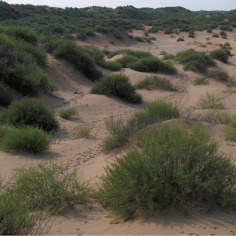
A high nitrogen content per leaf area (Narea) induced by drought can enhance water use efficiency (WUE), but may also increase leaf construction cost (CC). Wei et al. (pp. 541–553) hypothesize that maximizing Narea would constitute a process to balance WUE and CC in drought-resistant plants along a rainfall gradient. They find that below a drought threshold with moisture index ≤0.29, drought-resistant plants tend to maximize their WUE through increased Narea at a given CCarea. The drought threshold corresponds well to the zonal boundary between typical and desert steppes in northern China, suggesting a linkage between leaf traits and arid vegetation zonation.


